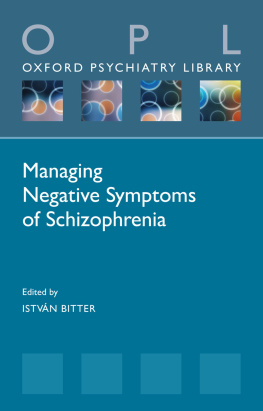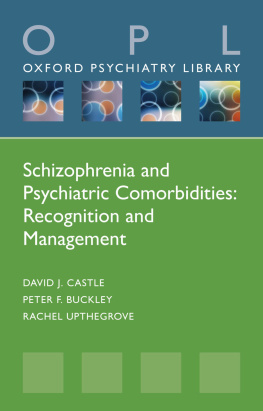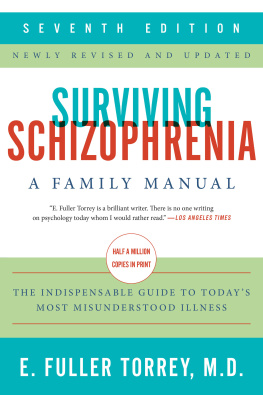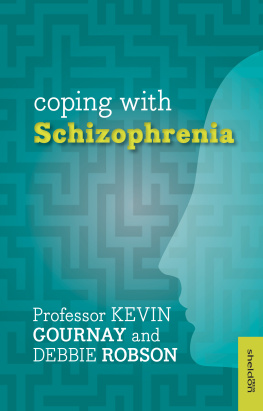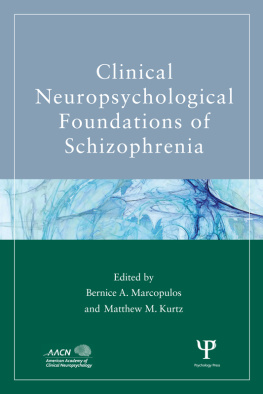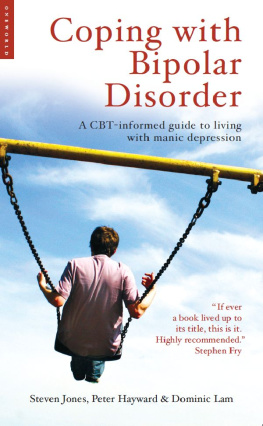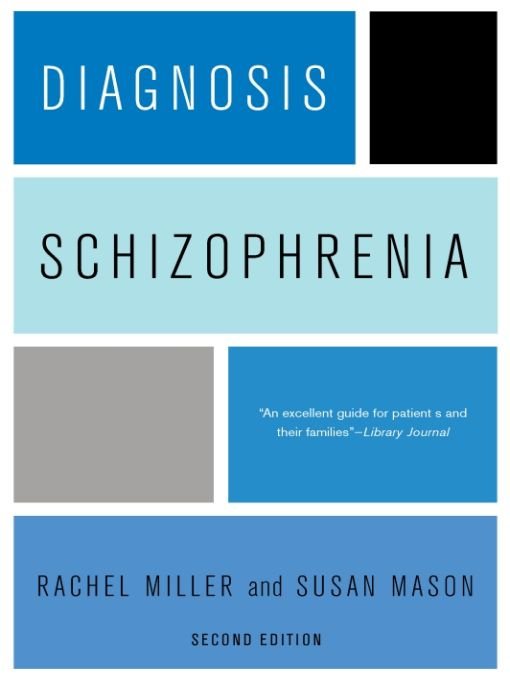Table of Contents
Foreword to the Second Edition
When Rachel Miller and Susan Mason asked me to update the foreword for the second edition of Diagnosis: Schizophrenia, my first reaction was to ask, Can you just use what I wrote in 1999? They graciously said yes, and we agreed that the foreword to the first edition should be included in the present volume. But the ten years since I wrote those words have seen important advances in our understanding of schizophrenia and specific therapeutics available for people early in the course of their illness, as well as in our views of how and when to engage patients and their families.
The second edition therefore includes new information about the brain and schizophrenia, genetics, and childhood-onset schizophrenia. In addition, new medications are available, and these and their side effects are considered. Perhaps the most important changes are in sections that deal with coping with side effects of medication like weight gain, help with substance abuse and smoking, understanding delusions, dealing with violent thoughts and feelings, and negotiating the system of benefits for medication and Medicaid.
In addition to the advances in understanding schizophrenia and the guidance that has developed over that past decade, publication of the second edition of Diagnosis: Schizophrenia comes at a time when the National Institute of Mental Health (NIMH) has initiated a major research effort designed to change both perceptions and outcomes of schizophrenia. RAISERecovery After an Initial Schizophrenia Episodeis a largescale research project initiated by the NIMH in the summer of 2009. It will develop and test innovative and coordinated intervention approaches in the early stages of the illness, when individuals may be most responsive to treatment. For more information and updates on this initiative, you can go to the NIMH RAISE Project Page on the NIMH Web site: www.nimh.nih.gov/health/topics/schizophrenia/raise/index.shtml.
The first edition has been successful beyond our hopes for a volume that built on the experiences of patients at a single clinic; over 20,000 copies have been soldreaching patients and families at treatment settings and in communities throughout the United States and beyond. In addition to the audience for which it was designed, psychiatry residents and other clinicians new to schizophrenia treatment have found that it is a valuable tool. I have bought a number of copies myself to distribute. Understanding the perspective of patients and their families as they first encounter the health system and trying to see both the experience of the illness and the clinical world through their eyes can be invaluable.
So, the recommendation for Diagnosis: Schizophrenia, second edition is much the same as for the first edition. Read it cover to cover or check the table of contents or index if you need some specific information, and remember that just as individuals change over time, so will our understanding of schizophrenia and of the ways to help individuals and their families cope and grow.
Nina Schooler, Ph.D.
Professor of Psychiatry and Behavioral Sciences
SUNY Downstate Medical Center
Brooklyn, New York
Foreword
In 1966, when I was a student, I attended my first case conference in a psychiatric hospital. Sitting around the table were the psychiatrist who was the director of a 150-bed division in this large urban hospital, the patients treating psychiatrist, and other members of the treatment team: a social worker, a clinical psychologist, a clinical psychology intern, and other students. The patient we were discussing was a young man who was experiencing his first hospitalization, and everyone seemed to agree that the evidence pointed to a diagnosis of schizophrenia. When the discussion was over, all eyes turned to the director. He nodded sagely and said something like: This is a very nice young man. We should not give him such a terrible diagnosis at this time. When he comes back the next time ... that will be time enough. Now, let us find another diagnosis. There was a universal nod of agreement, and then the group found another diagnosis.
In 1999 I attended another case conference, this time for a young woman who was experiencing her first hospitalization. The patient was interviewed by the head of the psychiatry department, with staff and trainees observing. The staff provided additional information regarding psychological testing and a treatment course. Then there was a lively discussion about diagnosis. One of the senior staff voiced the same sentiment I had heard more than thirty years earlier: Dont use the word schizophrenia yet. Lets wait.
This book counters the assumptions that underlie those statements: that using the word schizophrenia should be shunned for as long as possible; that using it as the diagnosis of a patient is necessarily a bad thing; and that people for whom it is an appropriate diagnosis have no hope and no expectations.
Diagnosis: Schizophrenia was written by Rachel Miller, L.C.S.W., Ph.D., Susan Mason, Ph.D., and a group of patients who participated in the New Onset Psychosis Program at The Zucker Hillside Hospital, a division of North ShoreLong Island Jewish Health System. It grew out of the patients desire to share with others their experiences with the illness and how they have coped with and solved problems. The initial experience of schizophrenia can be frightening, and the chapters that follow, told by people who have been there, are designed to help chart a path toward recovery.
We hope that Diagnosis: Schizophrenia will find a place in hospital waiting rooms, in social workers offices, and in the back pockets of patients and their families who have just heard the diagnosis of schizophrenia for the first time. Its purpose is to develop and strengthen understanding and offer tools for patients, their families, and those who provide treatment. The chapters are short and to the point, and they cover a wide range of issues from hospitalization to rehabilitation. Dip in and read a chapter that deals with a current problem, or read the book cover to cover. Diagnosis: Schizophrenia brings a new perspective to the information on coping with mental illness that is available through a range of sources.
Nina Schooler, Ph.D.
Director of Research
Hillside Hospital
North ShoreLong Island Jewish Health System
Introductory Note
Eight years after the first edition of Diagnosis: Schizophrenias publication, much has changed and little has changed. New medications have been developed and our understanding of schizophrenia has expanded. Yet, young people continue to develop schizophrenia, with the same symptoms and the same struggles with recovery as the thirty-five people in this book share.
When wethirty-five young people newly diagnosed with schizophrenia plus two social workersembarked on the four-year journey of planning, interviewing, illustrating, reviewing, editing, and finding a publisher for the first edition, we had little idea of the difficulty we would have interesting a publisher in a book that primarily was written for people with schizophrenia. Fortunately, we found John Michel of Columbia University Press, who saw the promise of this book. Now, thousands of copies later and with feedback from many young people who were helped by it, the stigma is just a little bit lessened. When we began, there were no other books targeted to people with schizophrenia; now we are happy to say there are several.


